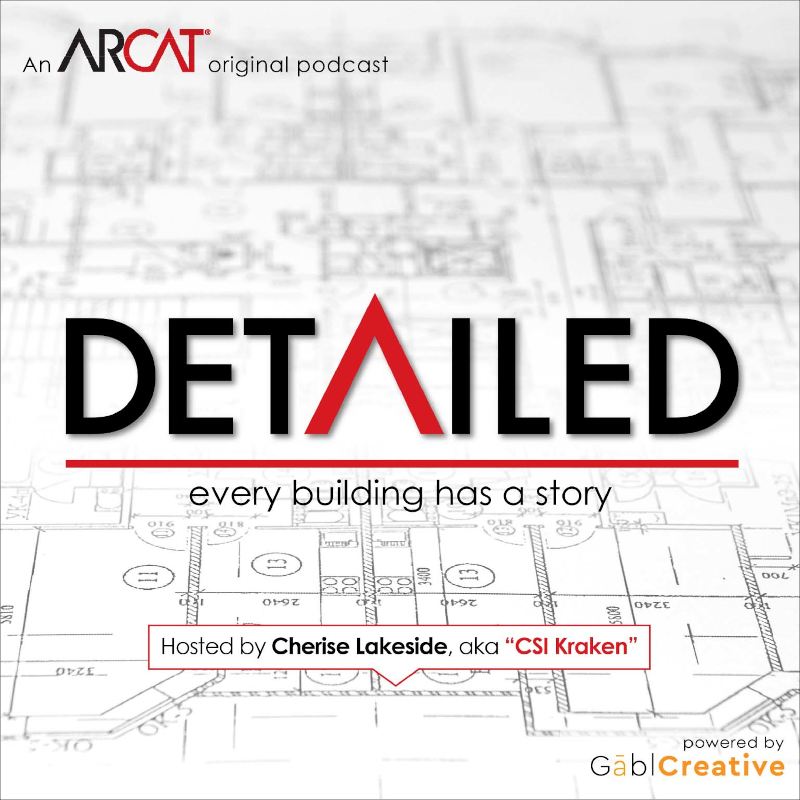|
Contributed by Michael C. Kerner Many factors must be considered when a design specifies cold-formed steel framing members. Material selection will impact nearly every member of the construction team including the architect, engineer, specifier, code official, distributor and contractor - and could even impact the safety of building occupants. Therefore, it is imperative that there’s an understanding of requirements needed for steel framing members to be designated as code compliant.
One of the most commonly specified materials for commercial construction is steel. Generally used for both load-bearing (structural) and non-load bearing wall and floor systems (non-structural), millions of pounds of the material is used every year for the non-combustible construction of office and apartment buildings, hotels and hospitals across country. But, how does a contractor know if the steel studs being purchased meet International Building Code (IBC) and ASTM requirements? For some products, such as fire-rated doors, this is easy because the products bear the label of a recognized third party inspection agency. For the architect, builder and general contractor, it is important that they receive the building products the specifications demand. For metal studs, ASTM C645 (drywall framing) and ASTM C955 (structural framing) are the standards referenced in the code. These documents specify the minimum criteria for: decimal thickness, type and weight of protective coating, mechanical properties of the steel, physical configuration of the stud and labeling requirements. Without meeting all the requirements, metal studs are not code compliant. For example, a structural load-bearing stud is required to list the “coating designator”, CP-60, in the ink jet stream and in all supporting literature. The same consideration should be given when writing the specification, the coating designator, CP-60, should be listed. All these criteria must be met for a steel stud to be code compliant. Building Occupant Safety In addition to the building code requirements, there is one other important issue that must be recognized by both the installer and the design professional. The use of non-compliant material can create life-safety issues. For example, if a stud is required to be a certain thickness to attain a specific limiting height and/or carry a certain load, what effect is there when a thinner metal is used than what is specified? The stud may fail and cause injury to the building occupants, or in a life-safety situation such as a fire, the rated partition may fail and it would not allow the building occupants time to escape. It is also possible that an individual product is code-compliant, yet it will not perform as intended in a life-safety situation. As an example, a metal stud could meet the minimum requirements of ASTM C645 yet not meet the requirements of the fire-rated assembly in which it is used. How is this possible? Word of Caution Keep in mind that ASTM specifications are minimum requirements for the product. These requirements must be checked against the actual products used in a tested assembly. For example, the disconnect can occur when comparing building code requirements against the method in which a given fire-rated assembly must be constructed. For example, if an architect’s partition schedule calls for UL Design U411, but only calls out the depth of the stud, then the following scenario may occur: The contractor will supply a stud that meets the project specifications, which call for the product to comply with ASTM C645. However, if the actual tested assembly were researched, it would reveal that the stud would require a return lip of 3/8 inch (10 mm). This is much larger than the 3/16-inch (5-mm) return lip C645 requires. Therefore, the partition would not meet the fire-rated assembly construction requirements. The correct products and proper assembly must be employed or life-safety issues are raised in the building. If the proper products cannot be sourced, then a different tested assembly may need to be substituted. Knowledge of the building codes for your jurisdiction is imperative to determine if a product is code-compliant. If you are not sure, ask your manufacturer. It may take some extra time to research, but when the integrity of the products and our industry are at stake, it would certainly seem worthy of our attention.
17 Comments
Steel is graded as a way of classification and is often categorized into four groups Carbon, Alloy, Stainless, and Tool. Carbon Steels only contain trace amounts of elements besides carbon and iron. This group is the most common, accounting for 90% of steel production.
Reply
2/25/2021 11:08:44 am
Hello
Reply
3/15/2021 10:21:52 am
Hello
Reply
Occupant safety is a big concern for many architects, engineers, contractors, and building owners. Often, time's people who are responsible for building occupant safety either don't understand it themselves, or they don't have a strong commitment to making sure that it is done properly. You can help yourself to ensure building occupant safety by becoming educated about the building you're designing, finding an experienced professional to do the designs, and following all standards set forth by your architect or engineer. There is nothing more important than the health and well being of every individual that work in your building.
Reply
4/9/2021 08:30:16 am
Many factors must be considered when a design specifies cold-formed steel framing members. Material selection will impact nearly every member of the construction team including the architect, engineer, specifier,
Reply
With the passage of time, a number of industries have come up with different ways of providing better quality steel. One such example is using steels in their specification. Steels are typically used for their tensile strength and torsion consistency. If you are looking for steels for your industry, this is the right article to read. The steels that we use for various applications are discussed and explained in this article. If you have any queries regarding your specification, feel free to drop a line in the comment box below.
Reply
5/9/2021 09:11:18 am
If you've been contemplating having your spine reexamined and you're wondering if you should get a steel back brace, the first question you should ask yourself is "What exactly is a steel back brace?" It's an actual medical-grade back brace that has been specifically created to help those who experience pain from their back or who have just plain old back problems. The term 'steel back' comes from the material the brace itself is made of: galvanized steel. In addition to the material, the brace is crafted to meet very specific guidelines and specifications that are set forth by the American Medical Association and the American College of Sports Medicine. Not only are these medical professionals involved in the design and manufacture of the brace, but they are also responsible for a strict quality control process that ensures the materials, joints, straps, and other aspects of the back brace don't cause undue discomfort or injury to the patient.
Reply
7/20/2021 11:02:08 am
I didn't know that every year millions of pounds of steel are used in construction. My sister owns a construction company, she mostly builds houses so she doesn't use a whole lot of steel. But bigger buildings must use a ton of steel to build.
Reply
8/2/2021 02:09:05 am
Nice to be seeing your site once again, it's been weeks for me. This article which ive been waited for so long. I need this guide to complete my mission inside the school, and it's same issue together along with your essay. Thanks, pleasant share.
Reply
4/19/2022 12:50:07 pm
<a href="https://www.tipcrewblog.com/aol-mail-login-sign-in-to-aol-mail-create-aol-email-account-on-aol-com/">Very</a><a href="https://www.tipcrewblog.com/bumble/"> nice</a> <a href="https://www.tipcrewblog.com/dream-singles-account-login-international-premium-dating-site-dream-singles-account/">piece</a> <a href="https://www.tipcrewblog.com/antmovies/">of </a><a href="https://www.tipcrewblog.com/">content </a><a href="https://www.tipcrewblog.com/sabwap-download-free-latest-movies-and-videos-on-www-sabwap-com/">I</a> <a href="https://www.tipcrewblog.com/bossmobi-mp3-songs-download-free-bossmobi-a-z-bollywood-music-on-www-bossmobi-com/">see</a><a href="https://www.tipcrewblog.com/wapkid-com/"> here</a> <a href="https://www.tipcrewblog.com/create-new-facebook-account-registration-form-how-to-create-new-facebook-account-sign-up-facebook/">on</a> <a href="https://www.tipcrewblog.com/zonkewap-music/">your</a> <a href="https://www.tipcrewblog.com/tellyseries/">blog</a>, <a href="https://www.tipcrewblog.com/waptrick-movies-download-waptrick-free-mp3-music-videos-on-www-waptrick-com/">you </a><a href="https://www.tipcrewblog.com/line-sign-up-with-facebook-line-account-sign-in-sign-up-line-app-download/">have</a> <a href="https://www.tipcrewblog.com/videovak-tv-series-download-and-watch-free-series-movies-videovak-com/">put</a> <a href="https://www.tipcrewblog.com/iflix-movies-watch-and-download-free-movies-tv-series-iflix-com/">out</a> <a href="https://www.tipcrewblog.com/how-to-download-yify-movies-yify-movies-online-stream-yify-tv-series/">very </a><a href="https://www.tipcrewblog.com/freshmaza-mp3-song-download-a-to-z-bollywood-mp3-free-music-on-freshmaza-cc/">vital</a> <a href="https://www.tipcrewblog.com/waptrick-music/">tips </a><a href="https://www.tipcrewblog.com/movies-joy-website-how-to-watch-free-hd-movies-on-movies-joy-streaming-website/">and</a> <a href="https://www.tipcrewblog.com/download-latest-american-songs-best-50-songs-in-usa-2020-foreign-mp3-songs/">information </a><a href="https://www.tipcrewblog.com/aol-search-search-engine-aol-search-history-search-aol-com/">for</a> <a href="https://www.tipcrewblog.com/yify-tv/">your</a> <a href="https://www.tipcrewblog.com/hdmp4mania-wwe-tv-shows-download-free-hdmp4mania-hollywood-and-bollywood-movies/">readers</a>. <a href="https://www.tipcrewblog.com/tfpdl-tv-series-how-to-download-tv-series-best-tv-series-direct-download-link-www-tfp-is/">Just </a><a href="https://www.tipcrewblog.com/mp3paw/">keep</a> <a href="https://www.tipcrewblog.com/how-to-stay-sign-in-to-yahoo-mail-keep-me-sign-in-to-my-yahoo-mail-account-yahoo-mail-login/">doing</a> <a href="https://www.tipcrewblog.com/goojara/">more</a> <a href="https://www.tipcrewblog.com/mp3goo/">it's</a> <a href="https://www.tipcrewblog.com/login-to-yahoo-with-facebook-yahoo-facebook-login/">great</a>.
Reply
7/30/2023 04:30:26 am
Tennessee beyond my last update in September 2021. Instead, I can create a fictional description of a locksmith company in Tennessee to give you a more comprehensive narrative:
Reply
The use of non-compliant material can create life-safety issues. For example, if a stud is required to be a certain thickness to attain a specific limiting height and/or carry a certain load, what effect is there when a thinner metal is used than what is specified?
Reply
6/25/2024 01:04:46 pm
Contractors and construction professionals must ensure that steel studs meet the stringent criteria outlined in ASTM C645 (drywall framing) and ASTM C955 (structural framing). These standards cover aspects such as thickness, protective coating, mechanical properties, physical configuration, and labeling requirements. Compliance with these standards is essential to meet code requirements and ensure structural integrity.
Reply
Leave a Reply. |
AboutLet's Fix Construction is an avenue to offer creative solutions, separate myths from facts and erase misconceptions about the architecture, engineering and construction (AEC) industry. Check out Cherise's latest podcast
Get blog post notifications hereArchives
March 2022
Categories
All
|


 RSS Feed
RSS Feed
